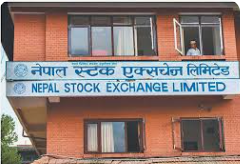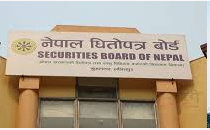
History of NEPSE (Nepal Stock Exchange)

The Securities (Share) history in Nepal starts when Biratnagar Jute Mill (which is biggest and oldest jute mill in Nepal established under Prime Minister Juddha Shamsher Rana in 1936) and Nepal Bank Limited ( The beginning of the era of formal banking in Nepal inaugurated on Kartik 30, 1994 by His Majesty King Tribhuvan) floated their shares in the Nepali market. These two companies floated their shares first time in Nepal in 1937. There were very few Companies in Nepal issuing shares to the general public until another Company Act came into operation. After almost 24 years, the Company Act was introduced in the country in 1964. The Government Bond was also issued for the first time in Nepal in the same year. In 1965, 3% compensation Bonds with a maturity period of 10 years were issued for the acquisition of Birta Land, and 1% Compensation Bonds with a maturity of 20 years were issued for the acquisition of private forests. Non-interest-bearing Prize Bonds of Rs 861 thousand were also issued to individuals in 1969. Altogether 36 public enterprises were established through subscription of shares under the Companies Act during 1960 – 1975.
After that, Nepal realized the need for a Securities Exchange Center to facilitate and promote the growth of capital markets in the country. Several discussions were made one by one from the Government side as well as the private side to finalize the modality of the Exchange Center. In 1973, with the initiation of the Nepal Government and Nepal Rastra Bank, securities Exchange Center Limited was established under the Companies Act. In the very beginning time, the responsibilities of the Securities Exchange Center were limited to undertaking brokering, underwriting, managing public issues, and creating markets for Securities and Government Bonds. Institutional development of the securities market in Nepal started in the year 1976 when the Securities Exchange Centre (SEC) was established under the Companies Act with the joint capital contribution of Nepal Rastra Bank and Nepal Industrial Development Corporation.
Institutional development of the capital market in Nepal started after the establishment of the Securities Exchange Center (SEC). The Industrial Policy of the government also encouraged the promotion of securities exchange in Nepal. Nepal government under a program initiated to reform the capital market converted the Securities Exchange Center (SEC) into the Nepal Stock Exchange (NEPSE) in 1993 as a nonprofit organization under the Securities Exchange Act of 1983. Similarly in the same year, the Securities Board of Nepal (SEBON) was also established by the government of Nepal on June 7, 1993, as an apex regulatory body of Securities Markets. SEBON regulates the market under the Securities Act, of 2006. Since the establishment of SEBON, it has been concentrating its efforts on the legal and statutory frameworks such as providing advice to the Government on matters related to the development of capital markets, registering the securities of public companies, issuing necessary securities regulations and directives, issue license to operate stock exchange, etc. Nepse has been working under the jurisdiction of the SEBON.
Introduction of Nepse (Nepal Stock Exchange)
Along with the formation of the Securities Exchange Board, His Majesty’s Government converted the Securities Exchange Centre Ltd. into Nepal Stock Exchange Ltd. (NEPSE) in 1993 to reform the capital market. Nepal Stock Exchange (NEPSE) opened its trading floor on 13th January 1994 after establishing under the Securities Exchange Act, of 1983. Currently, NEPSE is the sole secondary market for listed securities of Nepal. It works in the issue and redemption of securities and other financial instruments and capital events such as payments of income and dividends. The Board of Directors consists of Nine directors by the Securities Exchange Act 1983. Six directors are nominated by the Government of Nepal and the rest of the directors are from different institutional investors. The shareholder ownership structure of NEPSE comprises of Government of Nepal, Nepal Rastra Bank, Nepal Industrial and Development Corporation, and Members. After well establishment of Nepse, Public sentiment towards the corporate shares was so strong that the prices of equity shares of most of the companies, especially shares of companies in the banking and finance sector went up abruptly.
Introduction of SEBON

The Securities Board of Nepal (SEBON) was established on June 7, 1993, as an apex regulator of Securities Markets. SEBON regulates the market under the Securities Act, of 2006. SEBON has the power to regulate and manage the activities of the securities markets and persons involved in the business of dealing in securities by regulating the issuance, purchase, sale, and exchange of securities to protect the interests of investors in securities. The Governing Board is composed of seven members including a Full-time Chairman appointed by the Government for the tenure of 4 years, a Joint Secretary Ministry of Finance, a joint secretary of the Ministry of Law, justice and Parliamentary affairs, a representative from NRB, a representative from Institute of Chartered Accountants of Nepal, representative from Federation of Nepalese Chambers of Commerce and Industries and one member appointed by the Government from amongst the experts about management of securities market, development of capital market, financial or economic sector. The major financial sources of SEBON are government grants, transaction fees from the stock exchange, and registration fees of corporate securities.


